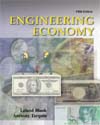To perform decision making under risk implies that some parameters of an engineering alternative are treated as random variables. Assumptions about the shape of the variable’s probability distribution are used to explain how the estimates of parameter values may vary. Additionally, measures such as the expected value and standard deviation describe the characteristic shape of the distribution. In this chapter, we learned several of the simple, but useful, discrete and continuous population distributions used in engineering economy—uniform and triangular—as well as specifying our own distribution or assuming the normal distribution. Since the population’s probability distribution for a parameter is not fully known, a random sample of size n is usually taken, and its sample average and standard deviation are determined. The results are used to make probability statements about the parameter, which help make the final decision with risk considered. The Monte Carlo sampling method is combined with engineering economy relations for a measure of worth such as PW to implement a simulation approach to risk analysis. The results of such an analysis can then be compared with decisions when parameter estimates are made with certainty. | 


 2002 McGraw-Hill Higher Education
2002 McGraw-Hill Higher Education